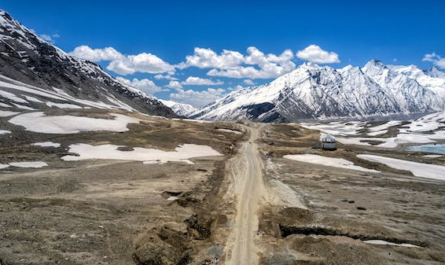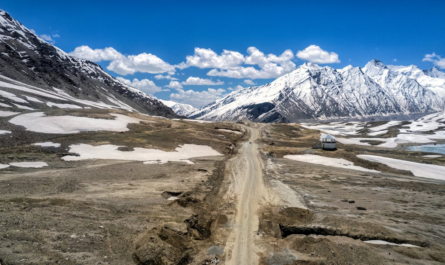Switzerland is famous for its breathtaking landscapes, environmental consciousness, and commitment to sustainability. As part of its broader sustainability goals, the country has implemented various initiatives to preserve its natural beauty while ensuring economic and social prosperity. One of the prime examples of sustainable tourism and environmental conservation in Switzerland is Mount Rigi, often referred to as the “Queen of the Mountains.”
Mount Rigi, situated between Lake Lucerne and Lake Zug, is a popular tourist destination, attracting thousands of visitors annually. While tourism is a significant economic driver, Switzerland has ensured that the region maintains a delicate balance between human activity and environmental conservation. This article explores the crucial role of Mount Rigi in advancing Switzerland’s sustainability goals, focusing on eco-friendly tourism, renewable energy, conservation efforts, sustainable transportation, and community engagement.
1. Sustainable Tourism and Ecotourism Initiatives
Tourism plays a vital role in the Swiss economy, but it also poses challenges related to environmental degradation. Mount Rigi serves as a model for sustainable tourism, promoting responsible travel practices while minimizing ecological impact.
a) Promotion of Low-Impact Tourism
Mount Rigi encourages eco-friendly tourism by providing well-marked hiking trails, guided nature tours, and educational programs for visitors. The emphasis on nature-based tourism ensures that travelers engage in activities that have minimal environmental footprints. Hiking, cycling, and winter sports are conducted with strict environmental guidelines to prevent habitat destruction and pollution.
b) Eco-Friendly Accommodations
Many hotels and lodges around Mount Rigi have adopted sustainable practices to reduce their environmental impact. Several accommodations use solar panels, energy-efficient lighting, and rainwater harvesting systems. Additionally, many hotels follow a zero-waste policy and incorporate organic, locally sourced ingredients in their menus to support local farmers and reduce carbon emissions from food transportation.
c) Sustainable Waste Management
Waste reduction is a significant focus for tourism operations around Mount Rigi. Many tourism businesses have implemented recycling and composting programs. Visitors are encouraged to follow the “leave no trace” principle, ensuring they dispose of waste responsibly or take it with them when they leave.
2. Renewable Energy and Green Infrastructure
Mount Rigi is at the forefront of Switzerland’s renewable energy initiatives, reducing reliance on fossil fuels and promoting sustainable energy sources.
a) Solar and Hydroelectric Power
Switzerland aims to increase its renewable energy share, and Mount Rigi contributes through solar and hydroelectric power usage. Many hotels and businesses in the region use solar panels to generate electricity, reducing dependency on non-renewable energy. Additionally, Switzerland’s hydroelectric plants, which account for about 60% of the country’s electricity generation, also contribute to the power supply for Mount Rigi.
b) Green Building Designs
Many buildings in the Mount Rigi area have adopted green architecture principles. Structures incorporate energy-efficient designs, natural ventilation, and sustainable materials to reduce environmental impact. Many mountain lodges are built with locally sourced timber and designed to blend seamlessly into the natural surroundings.
3. Conservation of Biodiversity and Natural Resources
Mount Rigi is home to diverse flora and fauna, and various conservation efforts ensure that these ecosystems remain intact.
a) Wildlife Protection
The Swiss government and environmental organizations monitor and protect Mount Rigi’s wildlife, including deer, marmots, and numerous bird species. Strict rules prohibit hunting and deforestation, while nature reserves ensure that habitats remain undisturbed.
b) Reforestation Projects
Deforestation and climate change have posed threats to Mount Rigi’s ecosystem. To combat these effects, reforestation projects have been initiated to restore degraded areas. Native tree species are planted to support biodiversity and enhance carbon sequestration, contributing to Switzerland’s broader climate goals.
c) Water Resource Management
Being located near two major lakes, Mount Rigi plays a crucial role in Switzerland’s water conservation efforts. Water sources in the region are carefully managed to prevent pollution and overuse. Sustainable water management practices ensure that tourism and agriculture do not deplete freshwater reserves.
4. Sustainable Transportation Solutions
Switzerland is globally recognized for its efficient and eco-friendly transportation systems, and Mount Rigi embodies this commitment through sustainable transport initiatives.
a) Electrified Cogwheel Trains
Mount Rigi is served by one of the world’s oldest mountain railway systems, the Rigi Railway. Unlike traditional fossil fuel-powered trains, the Rigi cogwheel trains operate on electricity, significantly reducing carbon emissions. The use of clean energy for railway operations aligns with Switzerland’s goal to reduce transportation-related greenhouse gas emissions.
b) Promotion of Public Transport
To minimize traffic congestion and air pollution, authorities encourage visitors to use public transport instead of personal vehicles. Well-connected train and boat services provide easy access to Mount Rigi from major cities like Zurich and Lucerne, making sustainable travel convenient and efficient.
c) Car-Free Zones
Certain areas of Mount Rigi restrict private vehicles to preserve the environment. This policy not only reduces pollution but also enhances the visitor experience by creating a more serene and natural setting.
5. Community Engagement and Education
Sustainability is not just about policies and infrastructure; it also involves educating communities and tourists about their role in conservation.
a) Environmental Awareness Programs
Local organizations and government bodies conduct workshops and campaigns to educate residents and tourists about sustainable practices. Topics include waste reduction, responsible hiking, and energy conservation.
b) Supporting Local Businesses
Sustainability also extends to the local economy. By supporting small businesses, traditional crafts, and locally produced goods, Mount Rigi promotes economic sustainability while reducing the carbon footprint associated with imported goods.
c) Volunteer and Citizen Participation
Community-driven initiatives, such as tree planting and clean-up drives, play an integral role in maintaining Mount Rigi’s pristine condition. Volunteer programs encourage tourists and locals to participate in conservation efforts, fostering a collective sense of responsibility for the environment.
Mount Rigi stands as a shining example of how tourism and sustainability can coexist harmoniously. Through initiatives in eco-friendly tourism, renewable energy adoption, conservation projects, sustainable transportation, and community engagement, Mount Rigi actively contributes to Switzerland’s ambitious sustainability goals. As climate change and environmental degradation pose growing challenges, the efforts on Mount Rigi demonstrate that responsible tourism and environmental stewardship can create a sustainable future.
By prioritizing ecological balance and sustainable development, Mount Rigi sets a benchmark for other tourist destinations worldwide. Its success serves as an inspiration, proving that natural beauty can be enjoyed without compromising the well-being of the planet.



